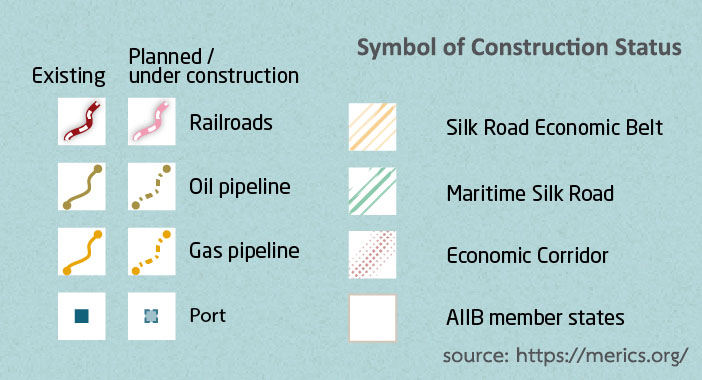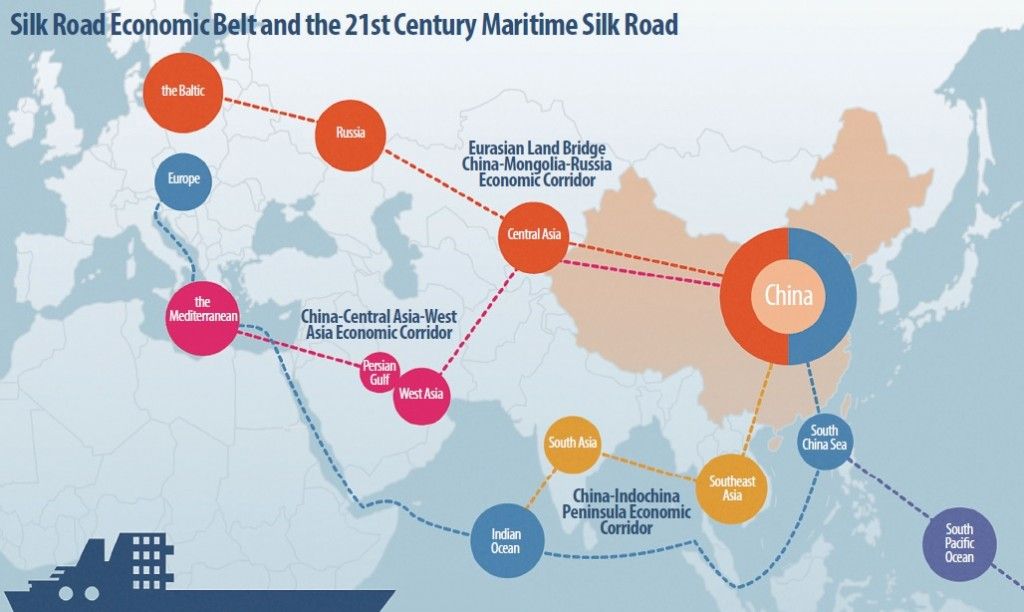Belt Road Initiative (One Belt One Road)

Credit: Mercator Institute for China Studies https://bit.ly/3sgsGcq

The New Silk Road’s strategy, formerly known as One Belt, One Road (OBOR), is now the Belt Road Initiative (BRI) as a network economy system. It is initiated by the Chinese government aiming to develop an infrastructure linking trade markets among China and other countries in Asia and Europe.
The development of connectivity and logistics represents totally national income about 50% of the world. The Chinese government aims the New Silk Road linkage to trade and cultural routes and sea freight connecting to countries in the coastline including the African continent. The timeframe of BRI has started in 2013 and will end in 2049.
Belt Road Initiative (BRI) consists of 2 routes; Silk Road Economic Belt is the land transport route and the Maritime Silk Road is the sea transport route.

The Silk Road Economic Belt is a land transport route, connecting China and Europe similar to the ancient silk road. The new land transport route is connected by China’s high-speed railway network to Central Asia, the Middle East. It connects major markets such as Kazakhstan, Iran, across to Turkey, entering Europe to major European cities such as Frankfurt, Venice, Amsterdam, where are the cities of trade, industry and foremost ports of the world.
The Maritime Silk Road is a maritime transport route, the 21st Century Maritime Economic Route. The route starts from major port cities of China such as Shanghai, Tianjin, Fuzhou and directing to the South China Sea, ASEAN crossing the Straits of Malacca to the Indian Ocean, entering the Middle East. Some parts of the route enter West Africa, to Persian Gulf – the Suez Canal – the Mediterranean Sea heading to Europe where directs to the west of China. It connects China’s ancient trade routes more complete and prominence.

Source: The Maritime Silk Road Society, Hong Kong https://bit.ly/3MahAxN